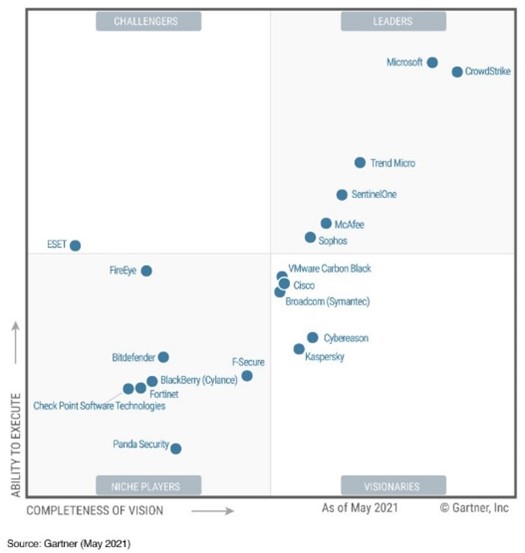IT professionals have had to adapt to many changes over the course of the last few years. There’s been a proliferation of discussions around AI and how it will impact cybersecurity, massive changes in the way we collaborate at work, and more that have added tons of work to the IT department. Having plenty of work is a good way of protecting budgets, but it can limit the ability of IT teams to help their organization grow. Luckily, there are ways to maximize the productivity of IT teams without requiring a massive investment of resources.
Across every industry, there are some IT functions that are necessary to keep the lights on. Network management, cybersecurity, device management, and other critical functions are necessary to an organization’s survival, but they can limit the resources IT professionals can deploy to meet strategic objectives. That’s why Microsoft created Intune and Autopilot.
What Is Microsoft Intune and Autopilot?
At a high level, Intune and Autopilot is a cloud-based device management solution that brings capabilities that used to be restricted to enterprise environments with Microsoft System Center deployed to manage their devices and bring it to a cost and skillset realm that works for a Small to Medium sized Business (SMB) demographic. Autopilot specifically is a feature of Intune that helps with the initial set up of devices, but it doesn’t have to be deployed as part of Intune, and therefore is often referred to separately.
These tools allow organizations to define the security and compliance posture required for devices to be on your network, which gives IT professionals complete control over endpoint connections, whether it’s a PC, mobile device, or any Windows device.
Enforcing Compliance with Intune
Every organization needs to have good IT governance in place if it’s going to protect itself from cyber attacks. However, enforcing those policies can be a full time job all its own, especially in an era of remote work and bring your own devices (BYDO). However, with Microsoft’s Intune, it’s a whole lot easier than it used to be.
As noted before, Intune allows organizations to set the standard security posture that a device needs to meet to access the network. It does this by allowing the IT team to set up granular cybersecurity policies, which, when paired with Azure Conditional Access, gives the IT team complete control over who can access what parts of the organization’s network and data. For example, the IT team could set up the conditions that must be met for sales managers to access certain parts of the organization’s data while creating a more robust set of conditions for HR. Since these conditions are specific to the job function, they would be functional in a BYDO environment as well as on company hardware.
Alongside determining who can access what data, the team can establish policies around antivirus software, ensuring applications are up to date, the kind of encryption the device has, and more to ensure that no device within your organization can open a door to your network for cybercriminals. While Intune does provide a standard set of criteria for devices to meet if they’re looking to connect to the network, IT professionals can also leverage a reporting system within Intune of devices that may present a risk, allowing teams to quickly find and remediate the vulnerability.
Intune can help with Device Deployment Too?
While the cybersecurity benefits of Microsoft’s Intune should not be underestimated, Intune can do more than add a new layer of protection to an organization. With Autopilot, IT leaders can order a new device, drop ship it to employees to wherever they’re located, and then set up a profile in the system using that device’s unique hash ID. Then, when the employee connects the PC to the internet during the initial setup the company defined profile, settings, and applications will be configured automatically without requiring manual intervention by the IT department or employee. This streamlines the process of new device deployment and device replacement and shaves days off of what used to be a tedious process.
I Don’t Want to Pay Extra for IT Management
Cost is something every business must consider, and it can be especially difficult in the SMB space to justify the cost of additional tools that are geared towards doing a job that’s already been assigned to a team member. However, the great thing about Intune is that if you already have a Microsoft 365 (M365) license, then access to Intune’s features will already be built into the package of tools the organization’s paying for already.
Depending on the SMB’s size and vision, IT departments could require massive resources to handle projects internally that allow the organization to scale and grow strategically. Time is often the most limited resource, and Intune frees up some of the time typically spent on day-to-day management so it can be spent on executing on the organization’s strategic vision. The reality is that if an organization is already using M365 and they don’t have a large, well resourced IT department, they’re allowing a ton of value at the table.
Integrating Intune into Your Day to Day Operations
Intune’s ability to streamline IT operations are invaluable to any organization looking to maximize the value of their M365 licenses or trying to ensure their IT department is able to put forward its best foot. Microsoft’s leadership in the space has been undisputed for some time, with Gartner’s Magic Quadrant ranking them as leaders in Endpoint protection and management. Taking advantage of leading tools that are built into the purchased licenses are a great way of ensuring IT professionals can scale their organizations without sacrificing the
If you’re interested in seeing how Intune could be deployed in your environment, contact us.



